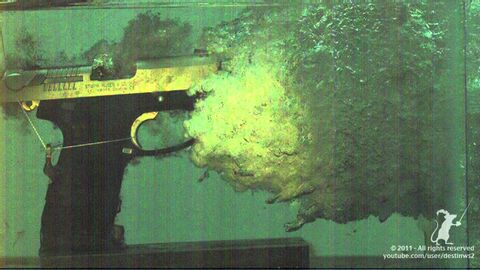
Subtitles & vocabulary
High Speed Video of Pistols Underwater - Smarter Every Day 19
00
Furong Lai posted on 2012/12/16Save
Video vocabulary
to
US /tu,tə/
・
UK /tə/
- Adverb
- Toward a point, person, place or thing
- Into a state of consciousness or awareness
- Preposition
- Showing that one thing is attached to another
- (Indicates a comparison between two people/things)
A1
More go
US /ɡo/
・
UK /ɡəʊ/
- Verb (Transitive/Intransitive)
- To attend or be at a place
- To do an activity
- Countable Noun
- A turn in a game
A1
More pretty
US /ˈprɪti/
・
UK /'prɪtɪ/
- Adjective
- Being attractive to the eye in a simple way
- Attractive in a delicate way without being truly beautiful
- Adverb
- Very; to a great degree
- To some extent; fairly
A1TOEIC
More blow
US /blo/
・
UK /bləʊ/
- Verb (Transitive/Intransitive)
- To move something using air
- To make air come quickly out of your mouth
- Noun
- Something that causes you difficulty or sadness
- Act of making air come out of your mouth
A2
More Use Energy
Unlock All Vocabulary
Unlock pronunciation, explanations, and filters
